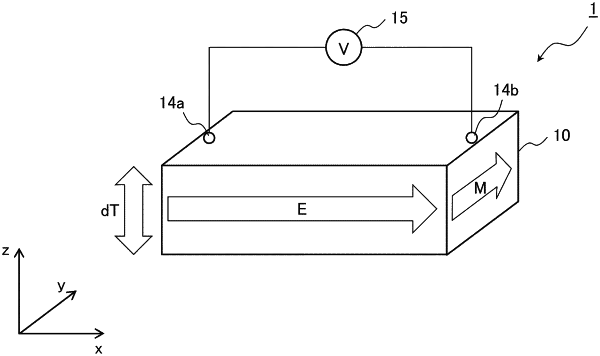| CPC H10N 15/20 (2023.02) [C22C 38/06 (2013.01); C22C 38/18 (2013.01); C22C 2202/02 (2013.01)] | 10 Claims |

|
1. A thermoelectric conversion element comprising:
a power generation layer comprising an iron-aluminum alloy exhibiting an anomalous Nernst effect and containing equal to or more than 70 weight percent of iron and aluminum in total, wherein
the power generation layer is magnetized in an in-plane direction parallel to a main surface of the power generation layer, and generates an electromotive force, due to an anomalous Nernst effect that develops in the magnetic alloy material in response to a temperature gradient applied to the power generation layer, in a direction intersecting both a magnetization direction of the magnetic alloy material and a direction of the applied temperature gradient,
a thickness of the power generation layer is greater than 10 micrometers in an out-of-plane direction perpendicular to the main surface of the power generation layer, and
the magnetic alloy material contains chromium of equal to or more than 10 weight percent and equal to or less than 25 weight percent.
|